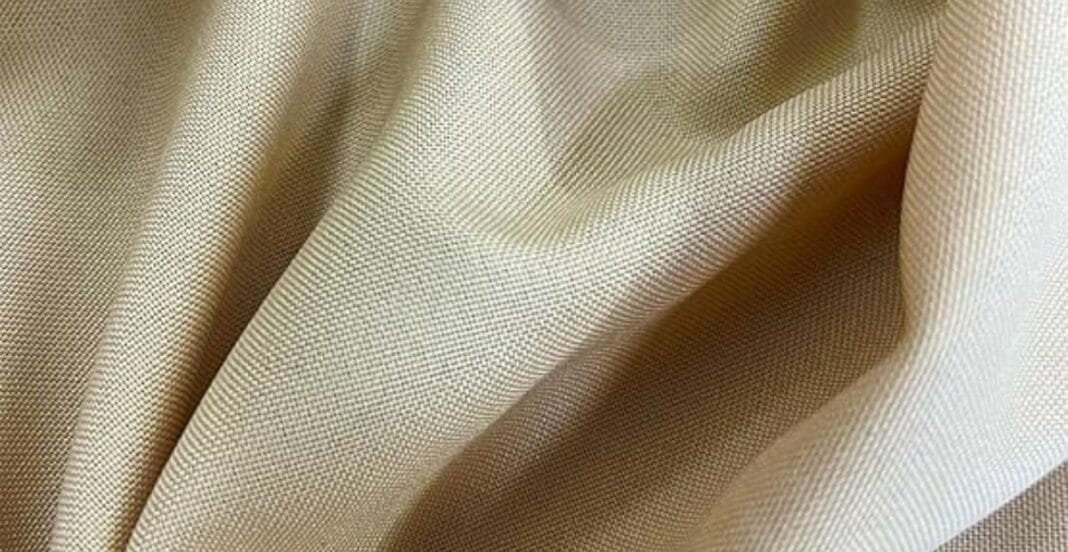Introduction
Globally, polyester is a synthetic fiber that is in high demand. Used in making clothes, curtains, and other fabrics, polyester is liked by many for its durability and low price. Adding to the list, it easy to look after and does not require tedious ironing, keeping its color and hues perfectly vibrant.how to clean 100% polyester
However, caring for garments made of polyester, or furnishings tailored from it, requires specific cleaning methods. If you know the right way to wash 100% polyester, your garments and furnishings will not lose their shine even after years. Whether washing everyday clothing or delicate upholstery, following a few expert steps will result in a world of difference.
What is 100% Polyester?
100% Polyester is any fabric made purely from polyester cushions with no discretionary blends with cotton, spandex or other materials. Its fibers are produced as a result of a chemical process rooted in compounds made from petroleum.
Polyester fabrics are popular due to their lightweight properties. They also do not absorb much moisture which means they dry quickly and can tolerate many washes which is a bonus. For these reasons, polyester is a popular modern apparel and home goods choice.
Why Is It Popular?
Durable and wrinkle-resistant polyester is a go-to fabric for busy lifestyles. It is cheaper than natural fibers such as cotton or wool, but has a similar feel to them.
Polyester is also stretch and shrink resistant, making it easy to care for. Learning how to clean 100% polyester ensures that it will be preserved for years.
Common Uses
In addition to sportswear, lightweight t-shirts, jackets, and even drapes are made from 100% polyester. Its moisture-wicking properties make it useful in activewear.
Because of its easy-care nature, it is widely used for hotel linens, office furniture, and car interiors such as seat covers.
Can You Wash 100% Polyester?
You can wash 100% polyester and it’s easy, but there are some things you need to watch out for to keep the fabric from shrinking, fading, or smelling over time.

Is The Polyester Washable?
Polyster is a machine washable fabric. In fact, most items made from this fabric are designed with machine washing in mind. But that doesn’t mean you can wash it any way you like.
Following the correct steps for how to clean 100% polyester will prevent damage and preserve quality.
Does It Fade or Shrink?
Even though polyester is known for resisting shrinkage won’t easily fade, excessive heat is still a problem. Using hot water or high heat during drying will alter the fabric and cause color bleeding in the future.
This is just some of the reasons you need to steer clear of harsh detergents and high temperatures when washing your clothes.
General Precautions Before Washing
Always Check the care label first. Keep polyester separated from items that have zippers, buttons or Velcro to avoid snagging. To protect prints and embroidery, turn the garments inside out.
Make sure not to put too much cloth into the washing machine and try to set it on gentle working mode.
How to wash 100 percent polyester (A step by step guide)
Cleaning polyester correctly ensures it stays in the best condition possible. For optimal results, follow this step-by-step guide.
Manual Washing Polyester
Most polyester fabrics can be washed in a washing machine, but polyester fabrics require special attention. Here’s how:
Best Water Temperature
Set the water temperature to warm or cold, hot water is not suitable. Cold water is the most helpful in preserving the orignal shape of the fabric while also not causing it to lose color.
Recommended Detergent
Pick a detergent that is mild and doesn’t have bleach in it. Avoid softener because it can get stuck to the polyester fibers which will minimize their ability to absorb moisture and sweat.
Gentle cycle settings
Select the gentle cycle or permanent press cycle. These are better because the washing machine won’t damage the fabric due to their low agitation rate.
Hand Wash Polyester
It works best for delicate pieces of polyester clothing such as lingerie and clothes with ornaments on them.
- Step-by-step Instructions
- Get a container and fill it with lukewarm to warm water.
- Put a small amount of light laundry soap.
- Immerse the clothing for 2-3 minutes then gently stir.
- Wash with clean water thoroughly.
- Helpful Tips in Soaking
Soak the items in water that are heavily soiled for 10 to 15 minutes before washing. Remember not to twist the clothing; just press with your hands to remove the water.
How to Safely Dry Polyester Fabrics
Drying polyester incorrectly may lead to static, shrinkage, or even permanent wrinkling. Let’s avoid these issues
Can You Tumble Dry Polyester?
Yes, you are able to tumble dry, but only on low heat. The fibers are subject to deformation, melting, or other forms of damage under high heat.
Best Dryer Settings (Low Heat)
Always select the low or air dry options on your dryer. During winter months especially, adding a dryer sheet will help reduce static cling.
Air-Drying vs. Machine Drying
Air-drying remains the safest method of all. Hang the garment on a drying rack or clothesline, avoiding direct sunlight. UV rays can cause fading over time.
Machine drying is quicker, but should be done only infrequently. If time is of the essence, using low heat and promptly removing the items is essential.
How to Prevent Static Cling
Mist the garment lightly with water or use a dryer sheet before drying. To decrease the amount of static accumulation, clothes can be hung near a humidifier.
How to Remove Stains from Polyester
Even strong fabrics made from polyester can have stains. However, most stains can be removed easily if the right procedures are followed.
Common Stains
The following may stain polyester fabrics:
- Grease products and oil.
- Body odor and sweat.
- Makeup or foundation.
- Ink and pen prints.
All of these can be removed with safe home remedies, though each requires a different technique.
DIY Stain Removal Solutions
- Oil stains: Rub gently with a drop of dish soap, rinse using warm water.
- Sweat stains: Soak with a mix of water and vinegar for 15 minutes.
- Ink stains: Using a cotton ball, dab with rubbing alcohol.
- Makeup stains: Scrub gently with paste of baking soda and water.
Avoiding Damage While Stain Treating
Never use bleach or harsh cleaners. Always test your cleaning method on a hidden area first. Proper rinsing after stain removal procedures is important to avoid leaving residues.
Ironing and Steaming Polyester

Though polyester is not the most prone fabric to wrinkles, in case it does…
Can You Iron Polyester Fabrics?
Yes, at low heat only. The synthetic fibers will be damaged at higher temperatures.
Best Iron Temperature (Low Heat)
On most irons, the polyester or synthetic setting (usually below 150°C or 300°F) will suffice. Garments should be placed inside out while being pressed.
Using a Pressing Cloth
Avoid direct heat by placing a pressing cloth or clean towel between the iron and the fabric. Resulting scorch marks will be prevented and smoothing will be achieved.
Steaming as an Alternative
Steaming is less damaging than ironing. It is best done while the article of clothing is hanged and should be done in a gentle top to bottom manner. It is the easiest method, most efficient, and less dangerous.
Special Care for Polyester Blends
Every polyester pieces of garments have varying degrees of difficulty. Blends require special attention depending on what they are made of.
Polyester-Spandex (Activewear)
Wash in cold water on delicate cycle. Steer clear of fabric softeners as it diminishes elasticity and moisture-wicking ability. Air-dry to keep the shape.
Polyester-Cotton Blends
These are more difficult to tear, but are easier to wrinkle. Machine wash in warm water and dry on low heat. Use medium temp iron for any touch ups.
Polyester-Wool Blends
Use detergent safe for cottons. Wash with cold water. Do not wring out or tumble dry. Lay flat to dry gently. Store gently, preferably by layering.
How to Clean Polyester Upholstery & Curtains
Because of their bulk and exposure, these household items need special attention and care.
Spot Cleaning Tips
Quickly blot the stain. Utilize water, vinegar, and mild soap for your cleaning solution. Blot the stain—never rub. Rinse with a damp cloth and let air-dry.
Machine-Washing vs. Professional Cleaning
Look for a tag. Check for machine-washable items. If it is, wash on gentle cycle and cold water. If no, seek professional cleaning to avoid fading and shrinkage.
Avoiding Fabric Damage
Steam cleaning or using strong chemicals are a no go for protective coatings as they. These also weaken the fibers.
Common Mistakes to Avoid When Cleaning Polyester
Although taking care of polyester is simple, mistakes are pretty easy to make.
Using High Heat
The most common mistake is using high-heat settings. This not only shrinks and damages the garments but also makes them lose color. Always set your iron or dryer to low heat.
Harsh Detergents or Bleach
Used too often, powerful stain and bleach removers will lead to fiber breakdown and become the reason your clothes lose color.
Overloading the Washing Machine
When you stuff your washing machine with too many clothes, friction as well as poor cleaning will occur. Give your polyester clothes enough room to move freely.
Conclusion
Cleaning polyester is simple when you know what to do. Use cold water, mild detergent, and low heat. Whether you are machine washing, hand cleaning, or dealing with stubborn stains, always be gentle on polyester.
Mastery of how to clean 100% polyester increases the lifespan of your clothing or household fabrics. Following the dos and don’ts will make sure that your polyester items remain bright, clean and fresh for a long time.
FAQs
Regular dry cleaning might not be necessary, but it’s best to follow the care label instructions for cleaning. Most garments can be ‘home’ washed.
Pure Polyester does not stretch, although it may feel looser due to a blend of spandex or elastane.
Washing with detergent that is too strong, not allowing fabric to dry completely, and overusing detergent can cause odor.


